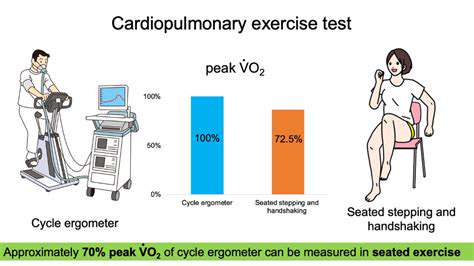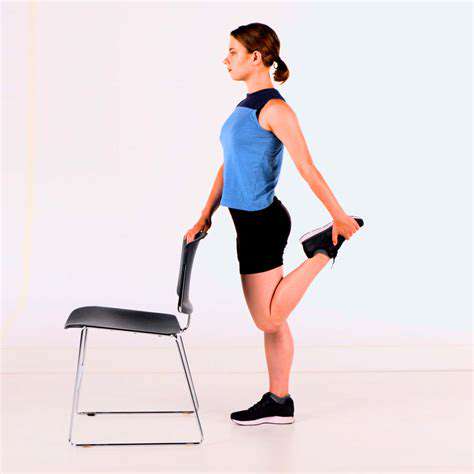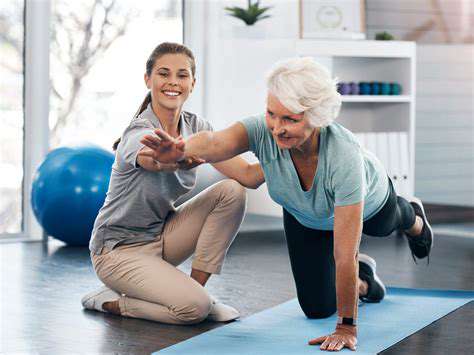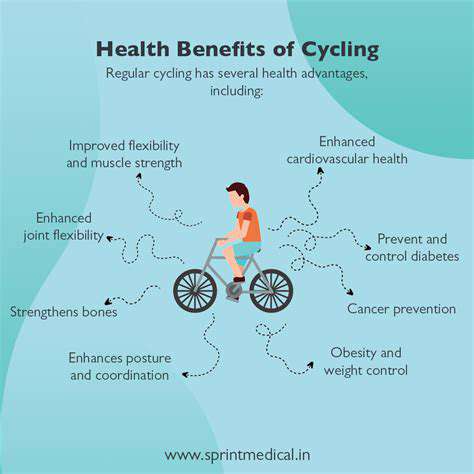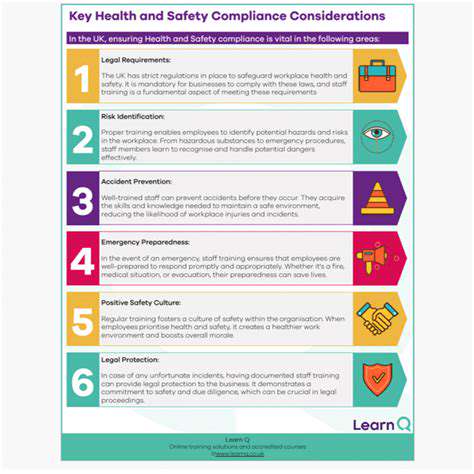Making Everyday Life Easier Through Exercise
Finding Movement in Your Commute
Who says exercise has to happen at the gym? Your daily commute holds untapped potential for movement. Try walking or biking to work when possible - even parking farther away adds steps. Those stairs you usually avoid? They're free cardio equipment! Simple changes like these create consistent activity without requiring extra time.
During lunch, ditch the desk for a 15-minute walk. After work, take the scenic route home. These small movement snacks accumulate into substantial health benefits - better mood, reduced stress, and improved energy. The key? Making them habitual parts of your routine rather than special events.
Incorporating Movement into Your Workday
Office jobs don't have to mean sitting all day. Set hourly alarms to stand, stretch, or walk to the water cooler. Consider alternating between sitting and standing if possible - your back will thank you later. Need to brainstorm? Try a walking meeting instead of another conference room session.
Schedule movement breaks like important meetings. Ten minutes of stretching or walking boosts circulation and mental clarity. Pro tip: Keep resistance bands in your desk drawer for quick strength exercises between tasks. These micro-movements combat stiffness and maintain energy throughout the workday.
Embracing Movement in Domestic Activities
Housework doubles as exercise when done intentionally. Turn chores into workouts - scrub floors vigorously, lunge while vacuuming, or squat when loading the dishwasher. Gardening becomes strength training when you focus on proper form. Even folding laundry offers opportunities to stretch and move.
Skip labor-saving devices when possible. Carry groceries instead of using a cart, take multiple trips upstairs, or hand-wash your car. These daily tasks burn calories while accomplishing necessary chores, proving exercise doesn't require special equipment or locations.
Making Movement a Social Activity
Transform sedentary socializing into active bonding. Suggest walking meetings instead of coffee dates, or try pickleball rather than happy hour. Join recreational sports leagues where the focus is fun first, fitness second. Active socializing strengthens relationships while improving health.
Family time can be movement time too. After-dinner walks, weekend hikes, or living room dance parties get everyone moving. When movement becomes shared enjoyment rather than obligation, it sticks. The social accountability helps maintain consistency long-term.
Making it a Sustainable Habit: Tips for Long-Term Success

Understanding the Importance of Sustainability
Sustainability extends beyond environmentalism - it's about creating lasting health habits. Just as ecosystems require balance, our bodies thrive on consistent, moderate movement rather than extreme, short-lived fitness kicks. This approach recognizes that small, daily actions create profound cumulative effects.
Every movement choice matters, whether taking stairs or parking farther away. Sustainable fitness means finding activities you'll maintain for years, not weeks. It's about working with your lifestyle rather than against it.
Setting Realistic Goals and Expectations
Forget drastic overhauls - focus on achievable micro-changes. Start with one new habit at a time, like a daily 10-minute walk, before adding more. Celebrate keeping a streak going rather than fixating on perfection.
Progress beats perfection every time. If you miss a day, simply resume your routine. Sustainable change comes from consistency over intensity. Remember - it's about building a lifestyle, not training for a single event.
Identifying and Addressing Your Current Habits
Track your normal routines for a week - when do you naturally have energy? When do you tend to sit longest? Target these patterns for strategic movement insertion. If you're sluggish mid-afternoon, that's prime time for a walk.
Notice what activities you enjoy versus dread. Sustainability comes from pleasure, not punishment. If you hate running but love dancing, build your routine around what feels good rather than what you should do.
The Power of Planning and Preparation
Set yourself up for success by preparing movement opportunities. Keep walking shoes at work, resistance bands by your TV, or yoga mats visible. Schedule movement like important appointments rather than leaving it to chance.
Anticipate obstacles - pack gym clothes the night before or identify walking routes near frequent destinations. When movement becomes the default rather than the exception, it sticks.
Finding Support and Community
Enlist friends as accountability partners or join activity-based groups. Shared experiences create motivation and enjoyment. Even virtual communities can provide encouragement and ideas.
Involve family in active pursuits - make movement a bonding experience rather than solitary drudgery. When supported by others, habits become traditions that withstand life's fluctuations.
Celebrating Progress and Adapting to Setbacks
Track non-scale victories like energy levels, mood improvements, or clothes fitting better. Recognize that some movement is always better than none - even five minutes counts.
When life disrupts your routine (as it will), adapt rather than abandon. Sustainability means flexibility - shorten workouts when busy or modify activities when injured. The habit persists through adjustments.

